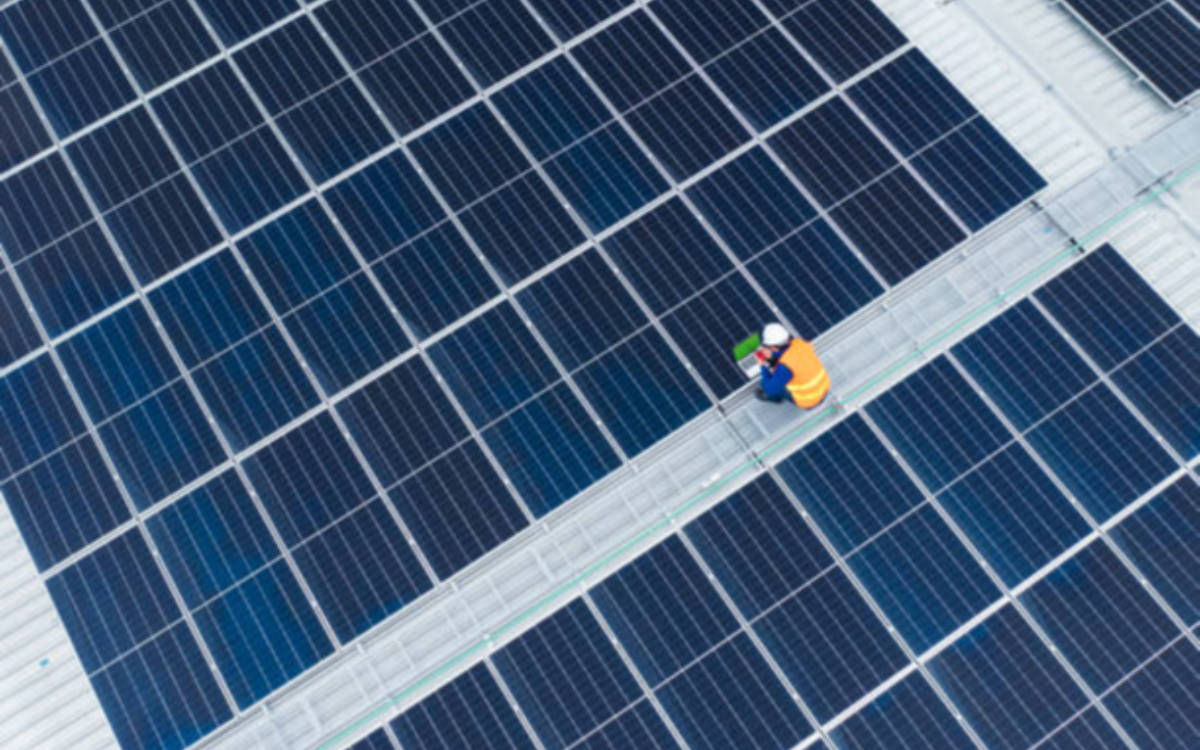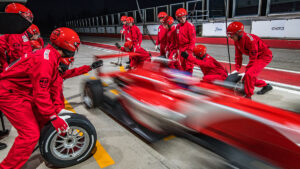Green Energy: Feds’ $40m fund for ultra-low cost solar, and Vulcan climbs into bed with Nobian

Ultra low cost solar was recently added as a priority technology in the Australian Government's latest Low Emissions Technology Statement (LETS). Pic: Getty Images
And suddenly there’s some $40 million in Federal funding up for grabs as the government backs solar R&D as part of the Morrison Prime Ministry’s net-zero Emissions Mission.
The Australian Renewable Energy Agency (ARENA) says the funding round will build on its previous R&D investment into solar PV and will seek to support projects which align with ARENA’s memorably named “Solar 30 30 30” which targets 30 per cent module efficiency and 30 cents per installed watt at utility scale by 2030.
‘Solar 30 30 30’: the science or marketing come first?
Ultra-low cost solar was recently added as a priority technology in the Australian Government’s latest Low Emissions Technology Statement (LETS), which set a stretch goal of $15 per megawatt hour, roughly a third of today’s cost.
ARENA says it welcomes applications which can materially reduce the cost of solar PV by 2030 across two streams:
- Stream 1 – Cells and Modules: Building on Australia’s leading track record of R&D and innovation in solar cells and modules; and
- Stream 2 – Balance of system, operations and maintenance: Seeking to broaden the approach to accelerate innovation that can drive down the upfront and ongoing costs of utility scale solar PV in the field.
‘H2 under $2’: Where solar meets hydrogen (and marketing)
Ultra-low cost solar will be a key input to scaling up production of low-cost green hydrogen, in support of the LETS hydrogen goal of “H2 under $2”, as well as key to unlocking other decarbonisation pathways for heavy industry including low emission materials such as green steel and aluminium.
ARENA CEO Darren Miller said the pioneering work of Australian solar researchers will be key to driving cost reductions and improving solar cell efficiency.
“Australia’s solar researchers have been leading the world for decades. Thirty years ago, UNSW researchers invented the PERC silicon solar cell, technology which today is the foundation of more than 80 per cent of the world’s solar panels.”
Vulcan signs up Nobian for Central Lithium Plant build
A term sheet and memorandum of understanding (MOU) has been signed between Vulcan Energy Resources (ASX:VUL) and top chemical producer, Nobian.
Revenues of around €1 billion in 2020 place Nobian as the fourth largest chlor-alkali producer in Europe after Inovyn, Dow and Covestro.
With an electrolysis process similar to part of Vulcan’s flowsheet, a core Nobian operations is the Höchst chemical park near Frankfurt, just where Vulcan has secured a plot for the construction of its Central Lithium Plant (CLP).
Electrochemical conversion to lithium hydroxide brothers
The two companies will assess the feasibility of a joint project for the development, construction and operation of the CLP, including the electrochemical conversion process of lithium chloride to battery quality lithium hydroxide.
VUL said this morning the joint development is phased, accompanied by a joint progress decision at the end of the second phase.
Investment from Nobian will be discussed on market terms following the construction of a definitve fesibility study:
- Phase-1 will include joint DFS for the development, construction and operation of the CLP;
- Phase-2 the operation of Vulcan’s electrolysis Demonstration Plant at Nobian’s existing site at Höchst, Frankfurt; and
- Phase-3 partly in parallel with phase 2, design/engineering, construction, start-up and joint operation of the CLP at commercial scale – this is where Vulcan and Nobian will also discuss chlorine and hydrogen offtakes (via pipe), which are planned by-products of Vulcan’s CLP.
Nobian is located at the same chemical park as Vulcan and consumes both chlorine and hydrogen as part of its derivatives production.
Both products can be transported via an existing pipe network.
ReNu Energy acquisition and update
ReNu Energy (ASX:RNE) has announced the advance of its Countrywide Renewable Hydrogen (CRH) acquisition, which remains subject to other completion conditions, including approval from ReNu Energy shareholders.
RNE put the word out on Christmas Eve (December 24) of its intention to hold a general meeting to seek shareholder approval – set down for February 1.
ReNu’s board has unanimously recommended shareholders vote in favour of resolutions 1 and 2 at the GM, both relating to the acquisition of 100% of the issued capital of CRH.
A little about CRH
CRH develops green hydrogen projects in collaboration with project partners and governments, initially targeting domestic market demand and where viable, expanding the projects to meet future export demand.
Its project timeline comprises the Melbourne Hub, targeted to produce and supply hydrogen to bus companies, Hydrogen Tasmania – which is incorporating a 10MW pilot project targeting 4.5 tonnes per day of hydrogen for domestic use – and Hydrogen Portland in Victoria.
The Victoria project is a proposed 10MW electrolyser supplying hydrogen to the local mobility and gas markets.
Related Topics
UNLOCK INSIGHTS
Discover the untold stories of emerging ASX stocks.
Daily news and expert analysis, it's free to subscribe.
By proceeding, you confirm you understand that we handle personal information in accordance with our Privacy Policy.








